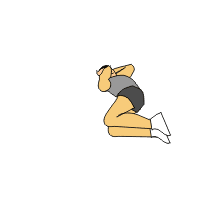 Obstacle #5 - Ab exercises: Contrary to popular belief, exercising your abdominal muscles (the "stomach area") isn't really going to burn much body fat at all. Caloric intake and vigorous, rythmic large-limb exercise are the keys to fat burning successfully. See more on this in this PPT video!
Obstacle #5 - Ab exercises: Contrary to popular belief, exercising your abdominal muscles (the "stomach area") isn't really going to burn much body fat at all. Caloric intake and vigorous, rythmic large-limb exercise are the keys to fat burning successfully. See more on this in this PPT video!Obstacle #4 - Intensity selection: Casual walks, some extra stair-climbing at work, and being generally more active are all helpful steps forward; but for great long-standing contributions, your heart-rate needs to be within the appropriate zone for you, your health history, and your current levels of fitness.
Obstacle #3 - Exercise duration: If you're not achieving the 2-pound-per-week fat loss that science expects from a well-crafted program, then one issue is likely the total duration of exercise. Twenty to thirty minutes can be helpful for the heart, blood vessels and lungs, but significant fat loss (enough to make you happy) often doesn't begin until the 40th or 50th minute. While this varies based on nutrition, hormones and other factors, you may need to exercise for over an hour at a time before you start regularly hitting your targets for fat loss. Our greatest fat loss successes, by far, come from clients who choose our 90-minute sessions.
Obstacle #2 - Sleep: Sleep quality and quantity both have an awfyu lot to do with fat loss success. Why? Because the hormones that are a big factor in weight loss/management are actually suppressed when deep sleep is minimal. Aim for a minimum of six hours per night, preferably more, in total darkness.
Obstacle #1 - Metabolism: While the practice of "calories in, calories out" is crucial, your metabolism is the critical factor between fast results and slow results. Fortunately, we have tremendous control over your metabolic rate. Protien intake, muscle strategies, herbal consumption, and meal timing all boost metabolism when implemented with the appropriate care. This all falls under the category of health coaching and is included free on non-session days to those who purchase our 40-session commitment packages for fitness training, Please reply or call to learn more!
Perfect Personal Training employs the highest standard of fitness and wellness science, with degreed, certified professionals of exceptional experience. To request your free consultation and fitness/health-risk assessment, visit http://perfectpersonaltraining,com
Testimonials, rates, and much more company information is all available online!


